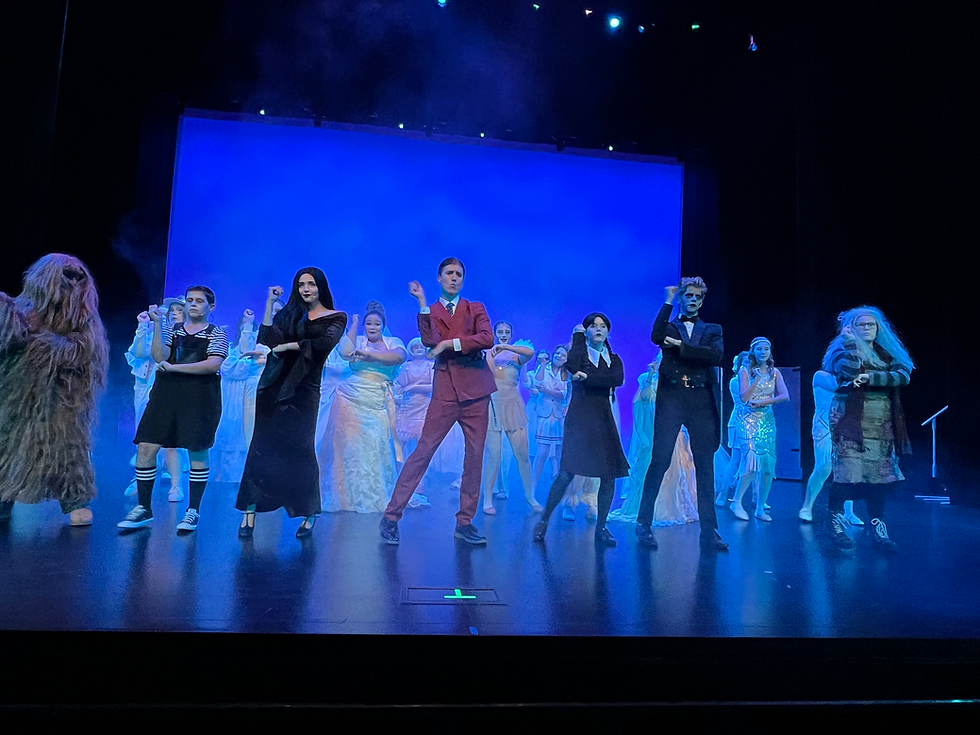COLUMN: Navigating Lines - Fitting In As A Multiracial, Multicultural Student
- Jamie O'Brien
- Jun 9
- 4 min read

Split between two cultural worlds, torn in half, divided by the Atlantic or a steaming ravine. In other words, maturing under the crosshairs of two distinct cultures was confusing.
Growing up in school, I spotted nuggets of my mother’s Filipino background in me that scarcely reflected the habits of my classmates: reusing the same disposable water bottle every morning (to prevent waste), gorging on every bit of my school lunch (regardless of how hungry I was), wearing a coat several sizes too big (to save money when I’d inevitably fill it out).
My father, on the other hand, was a naturally individualistic White American who acclimated to my mother’s saving habits. He never hesitated to buy me my favorite chocolates or fuel my hobbies. His Western music taste largely shaped my own, and I see him in my mind’s eye every time I listen to Bread or Steely Dan.
At home, frugality and family were the forefront of my life, but I followed my friends when they spent on take-out and enjoyed leisure time with little thought for budget. It was difficult to identify with one single culture when I so easily molded to both, but it was easy to feel a stronger connection to Western tradition the longer I spent away from home.
It was only when I visited the Philippines that I noticed how estranged I truly felt from Filipino culture.
I could call myself a Filipino girl in Tulsa, but in Manila I was a textbook tourist: lost, foreign, distinctly monolingual. The language barrier between my Filipino relatives and I was impossible to navigate, so I relied on my mother for communication.
I clumsily learned “mano po,” a simple greeting I'd give to an elder by lightly touching the back of their hand to my forehead.
My appearance was another story. Compared to my relatives, I was deathly pale, taller than most, and had hair a shade or two lighter than everyone else. It felt impossible to claim a culture when I stuck out like a sore thumb in either country.
But the longer I stayed, the more I noticed the parallels between my Filipino family’s customs and my own habits. Like my closet in Tulsa, the drawers in my grandmother’s house were overflowing with hand-me-downs. Old knick-knacks decorated every shelf and table, much in the same way my brother’s trinkets remained fixtures in my room long after he left for college. Most weekdays after school, I ate adobo, sinigang or anything with rice, prominent Filipino staples.
Back home, I could recognize many of these same quirks as reflections of the Filipino culture that I once felt too much of an imposter to identify with.
Just because you can’t see its influence doesn’t mean it’s not there.
Another perspective
Like me, 18-year-old Banaz Rafaii felt more accustomed to American culture despite growing up in a predominantly Turkish household.
At home, she speaks Turkish and participates in Ramadan — an Islamic holy month surrounding fasting and prayer — with her family every year.
"I've lived here in America since birth … which makes it difficult to identify with either culture,” Rafaii said. “When I visited Iraq a few years ago, I realized how out of touch I was with my culture because of all the unspoken customs I felt alien to, like having to visit other houses and vice versa to avoid seeming rude.”
As per Turkish tradition, there is a notable emphasis on hospitality and academics. Compared to the individualistic culture of the West, Rafaii’s loaded daily life seems worlds away.
Namely, Rafaii is used to pulling out all the stops when a guest visits, often taking care of the household chores and cooking in advance. As a high school senior, it is also expected of her to undertake multiple AP classes and champion high grades. These cultural differences are the most obvious when she interacts with her monocultural American peers.
“I realized my level of responsibility was unique to Turkish culture, when I talked about how tiring it was to constantly be in charge of family responsibilities, and no one understood,” Rafaii said.
Although her Turkish upbringing comes with many familial and collectivistic expectations, Rafaii enjoys striking a happy medium between cultures independently.
Specifically, she mixes music genres: listening to traditional Turkish music one day and popular American metal the next. Artists like İbrahim Tatlıses or Avenged Sevenfold typically dot her playlists.
“I also prefer eating traditional Turkish food because that's what I grew up with,” Rafaii said. “Foods like biryani, baklava, manti — it’s all really comforting to me, being able to feel a sense of belonging in both worlds.”
Striking a cultural balance
Based on the 2020 Census, about 33.8 million people in the United States identify as multiracial.
That’s a lot of cultures to account for.
As a multicultural person, finding balance involves exploring the traditions and customs of cultures that surround you and sticking to ones that resonate.
It’s important to remember that it isn’t an either/or dilemma.
To find balance, you often need to create your own cultural mix by interacting with communities, exploring traditional recipes and music, or connecting with family.
That is to say, claim a blended identity that reflects the variation of the melting pot of America.



